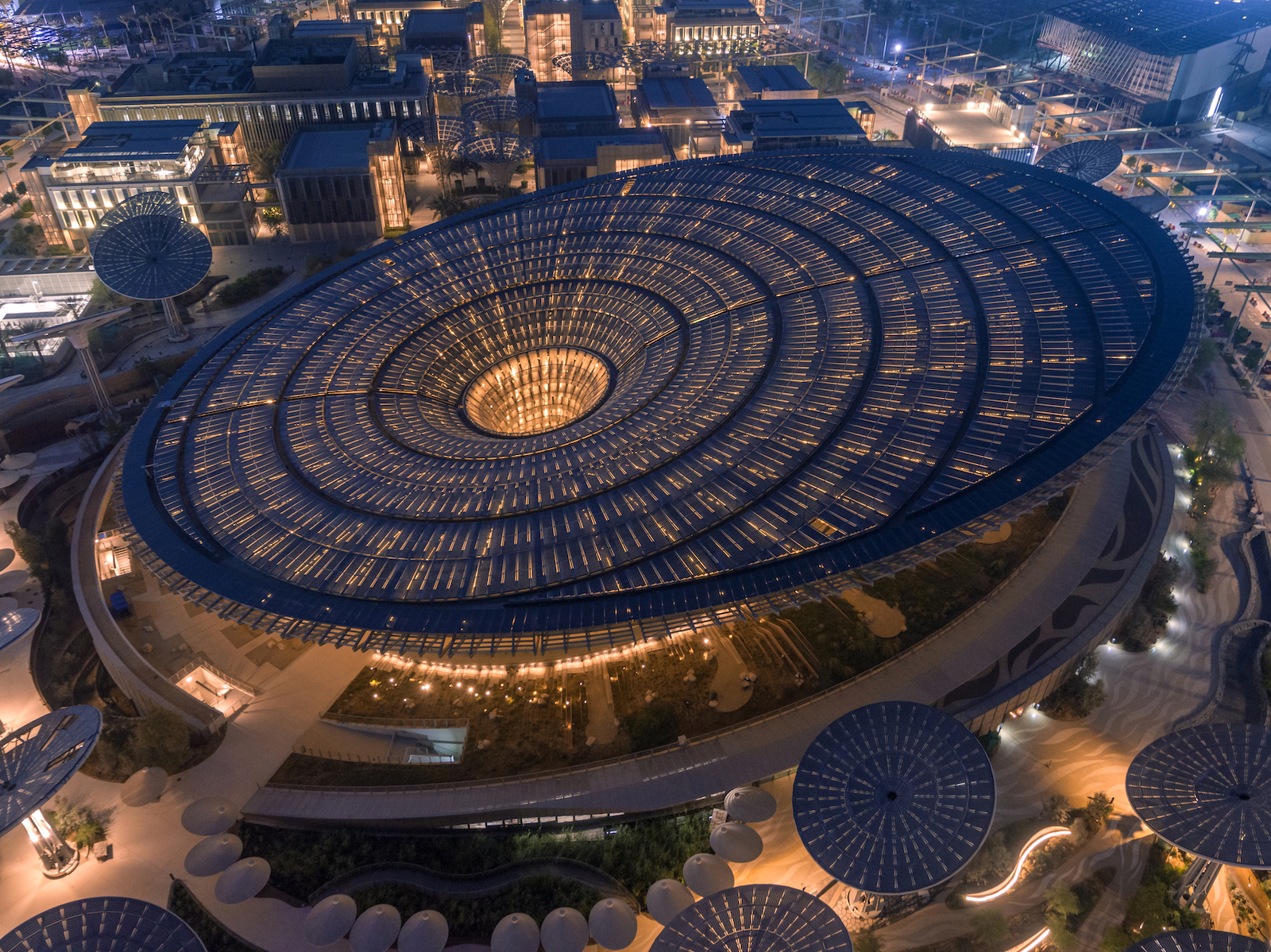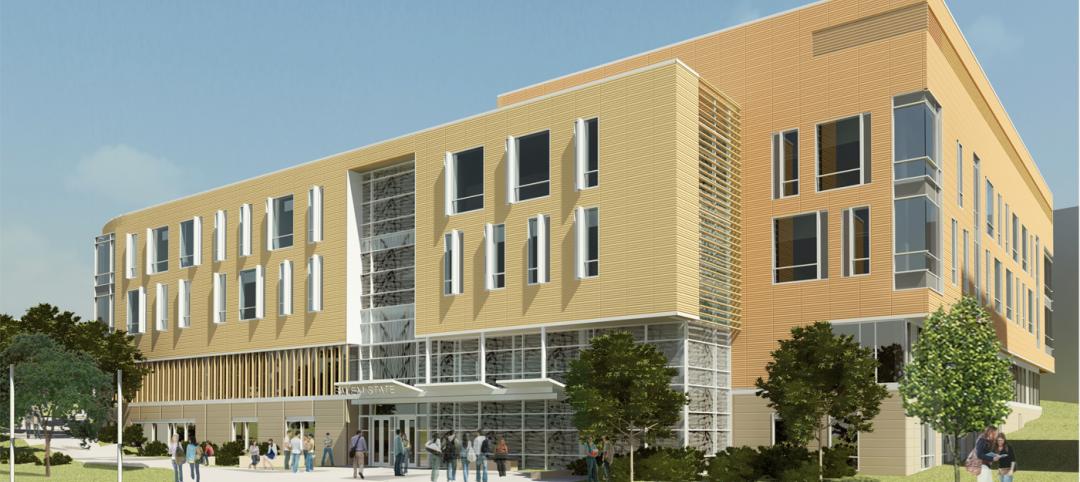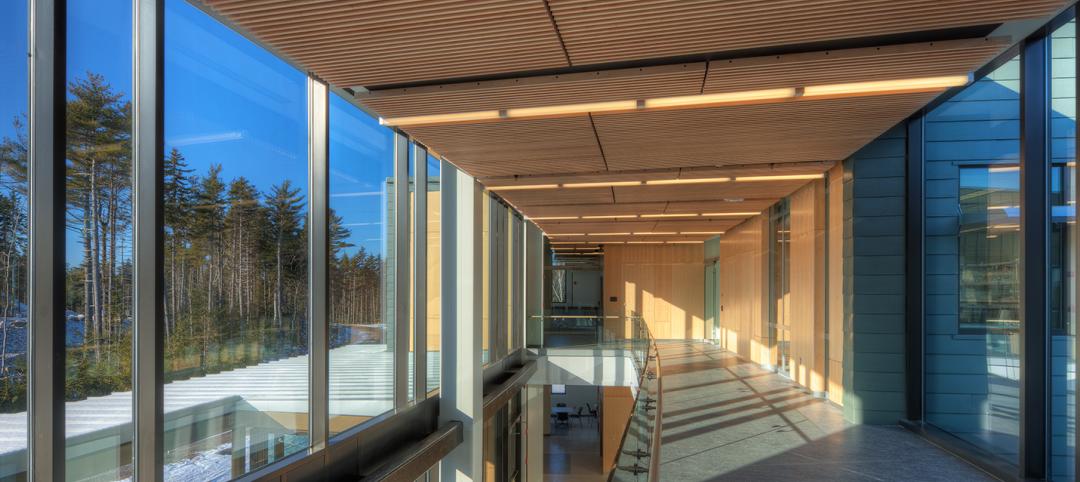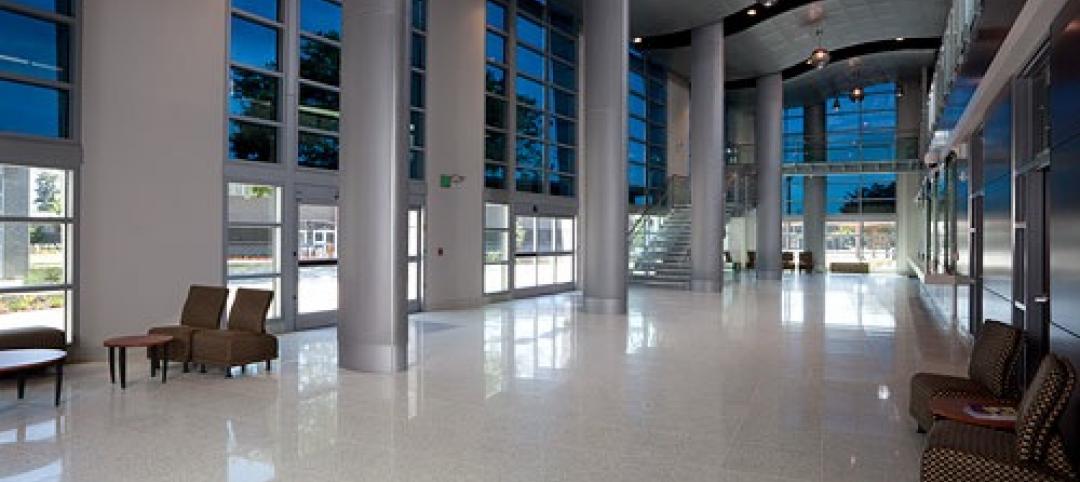Increasingly, building teams are comparing the use of building-integrated photovoltaic (BIPV) systems for façades, roofs, and other architectural assemblies with a promising and much easier alternative: conventional solar panel arrays, either on their building or off-site, to supplement their resiliency and decarbonization efforts. Recent examples include a tech company headquarters in Silicon Valley and a university in Arizona. In both cases, the project teams chose to expand their solar farms in nearby locations rather than use integrated PV technologies.
A growing group, however, is working harder. They are making BIPV an integral part of their latest green building works, contributing to a market expanding at about 15 percent per year. From the cascading glass skylights at the Edmonton Convention Center and the PV roof array overhanging the Bullitt Center in Seattle, to the new curved pavilion created for Dubai Expo and the modern PV façade at the University of Washington, creative applications generating ample electric loads are found worldwide, according to maker Onyx Solar.
“BIPV applications are challenging, and location and context are key to their early evaluations,” says John Ivanoff, an Associate Principal with Buro Happold’s façades and specialty structures team. “Arizona has more sunny days than Alaska or Maine. In some cities, there are recent code changes, such as in New York, where if the roof exceeds a certain area, the project team is required to evaluate the use of PV on the building.”
In urban contexts, neighboring buildings may cast excessive shadows, so the site itself is another aspect of the analysis, adds Ivanoff, who has worked on various innovative BIPV projects including Terra – The Sustainability Pavilion, which opened to the public in 2021 as one of the top three attractions of the Expo 2020 Dubai, UAE.
“BIPV is a challenge because the solar panels work best when on a slight angle, and vertical glass applications don’t always harness the sun in a direct enough way,” says Mark Rhoads, AIA, LEED AP, Associate Principal with Grimshaw, the architecture firm that designed Terra. “So the biggest challenges arise in applying BIPV to non-roof conditions.”
When Grimshaw and Buro Happold collaborated on Dubai’s Sustainability Pavilion, the recently completed educational venue for the client, Expo 2020 Dubai, the stakes were high. Promoting ecology, sustainable technologies, and green design, the project’s core building offers 86,000 sf of exhibition space that includes an auditorium, courtyard, and reservoir. “Soaring over the courtyard, the pavilion’s canopy accommodates more than 64,600 sf (6,000 sm) of ultra-efficient monocrystalline photovoltaic cells embedded in glass panels,” according to Grimshaw’s design team. “The combination of the cell and the glass casing allow the building to harness solar energy while providing shade and daylighting to the visitors below.”
Drawing inspiration from complex natural processes like photosynthesis, the deployable freestanding shade structures are constructed from steel and complex composites, structurally optimized to support an 18-meter photovoltaic array to harvest solar energy. Like a sunflower, the array rotates 180 degrees to follow the sun throughout the course of the day, maximizing energy yield and boosting solar cell efficiency. The bespoke trapezoidal panels employ highly efficient monocrystalline PV cells, embedded within three layers of glass, providing shade below without casting severe shadows or blocking views to the sky.
THE LATEST IN BIPV TECHNOLOGY
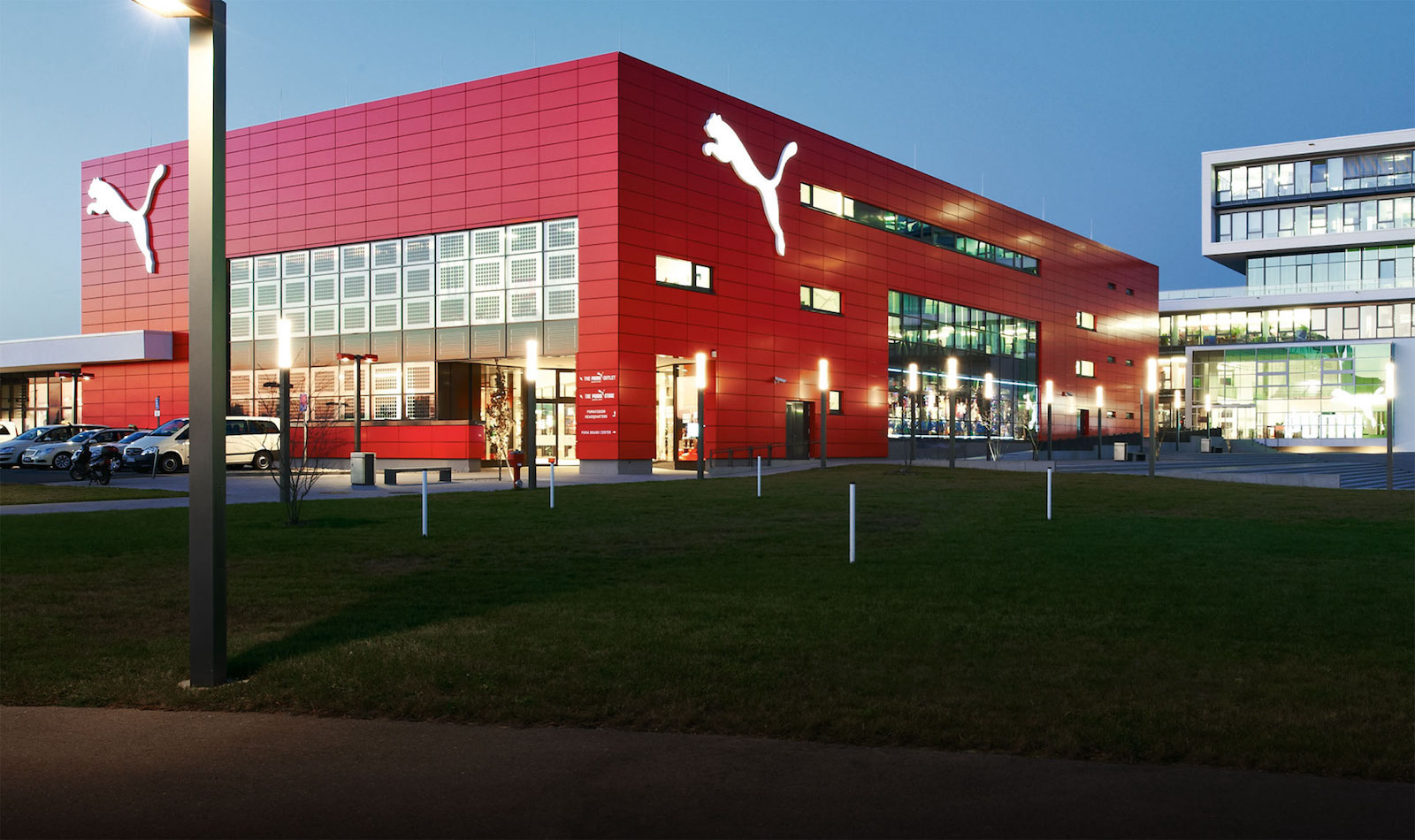
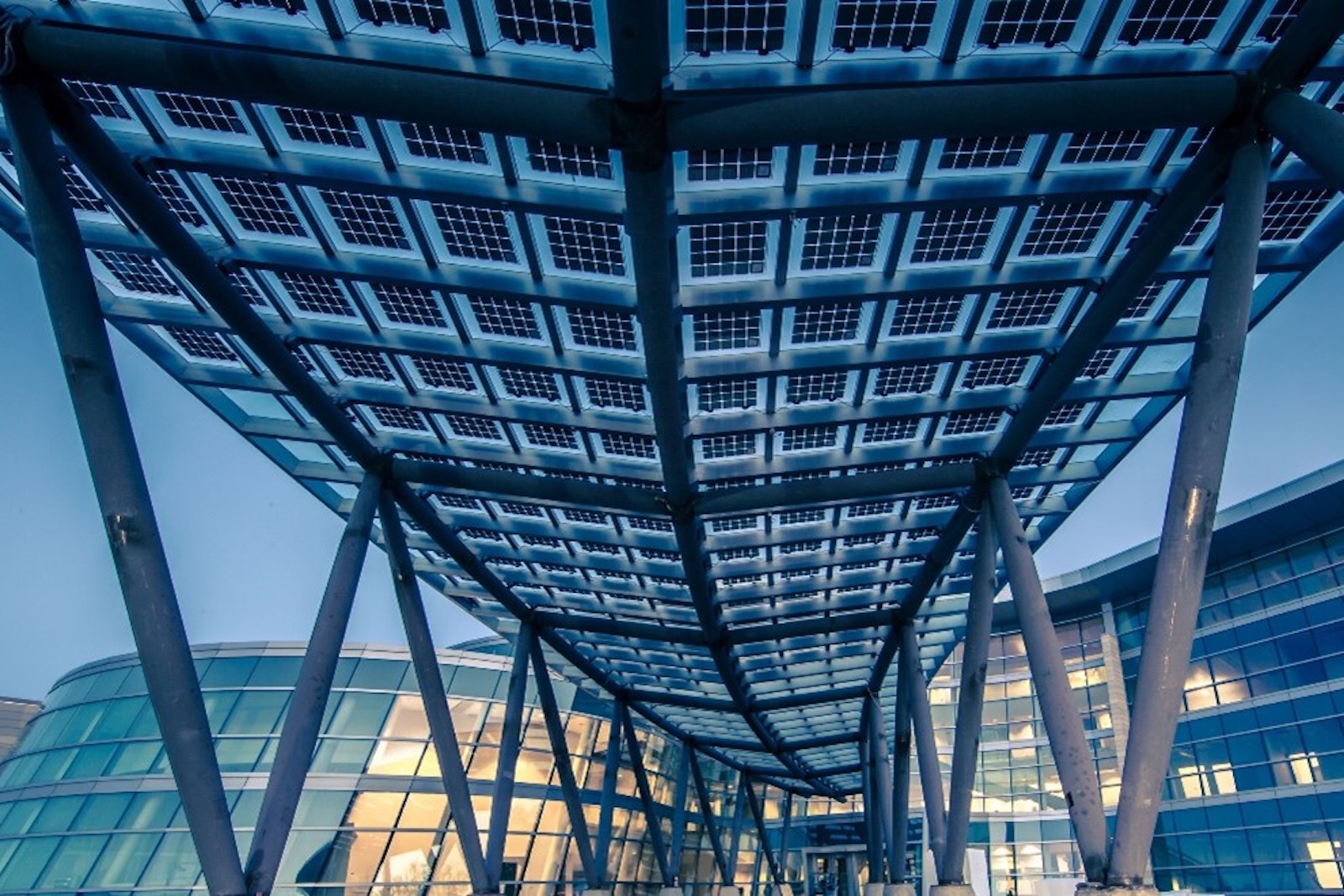
Monocrystalline solar cells represent one of four basic BIPV technologies, according to Vitro Solarvolt, a BIPV maker: “It renders a black appearance on solar cells with maximum energy-generation performance, while polycrystalline PV delivers a striking blue appearance with slightly reduced performance,” and it can be less expensive, as well. To provide a patterned appearance and higher visible light transmission (VLT) while retaining some of the energy generation benefits of monocrystalline PV, striped monocrystalline PV offers another option.
Buro Happold’s Ivanoff adds that thin film PV may be suitable for some applications. Thin films require less material, are generally cheaper but result in lower in efficiencies—110-130 peak watts per square meter (Wp/m2) versus 200 Wp/m2 for monocrystalline and 160 Wp/m2 for polycrystalline. Two thin film technologies can be integrated with glass—amorphous silicon (A-Si) and copper indium gallium selenide (CIGS)—and a third, cadmium telluride (CdTe), works for opaque panels. Vitro notes that BIPV glass panels can be used with spandrel glass, as well as low-emissivity (low-e) coatings and glass substrates, including tinted glass. Printed glass shingles are also well-established on the market, says Ivanofff, with surfaces that may be printed to look like other materials such as with a faux brick finish. Customized colored glass, he adds, is increasingly attractive to building teams.
Both Rhoads and Ivanoff stress that glass safety and fire performance should be considered, especially in horizontal and angled applications: “These are electronic elements, and in the UK, the Netherlands, and some U.S. jurisdictions it is regulated for fire safety,” says Rhoads. “Overheating is another issue in operations.” In addition to glass panels, other ways to integrate BIPV include vertically mounted high-performance panels, PV-covered louvers or shades—if those offer sufficient surface area—and street furniture integrated with PV panels, such as the bus shelters and sidewalk shade structures in Los Angeles, Singapore, and some Texas cities, says Ivanoff.
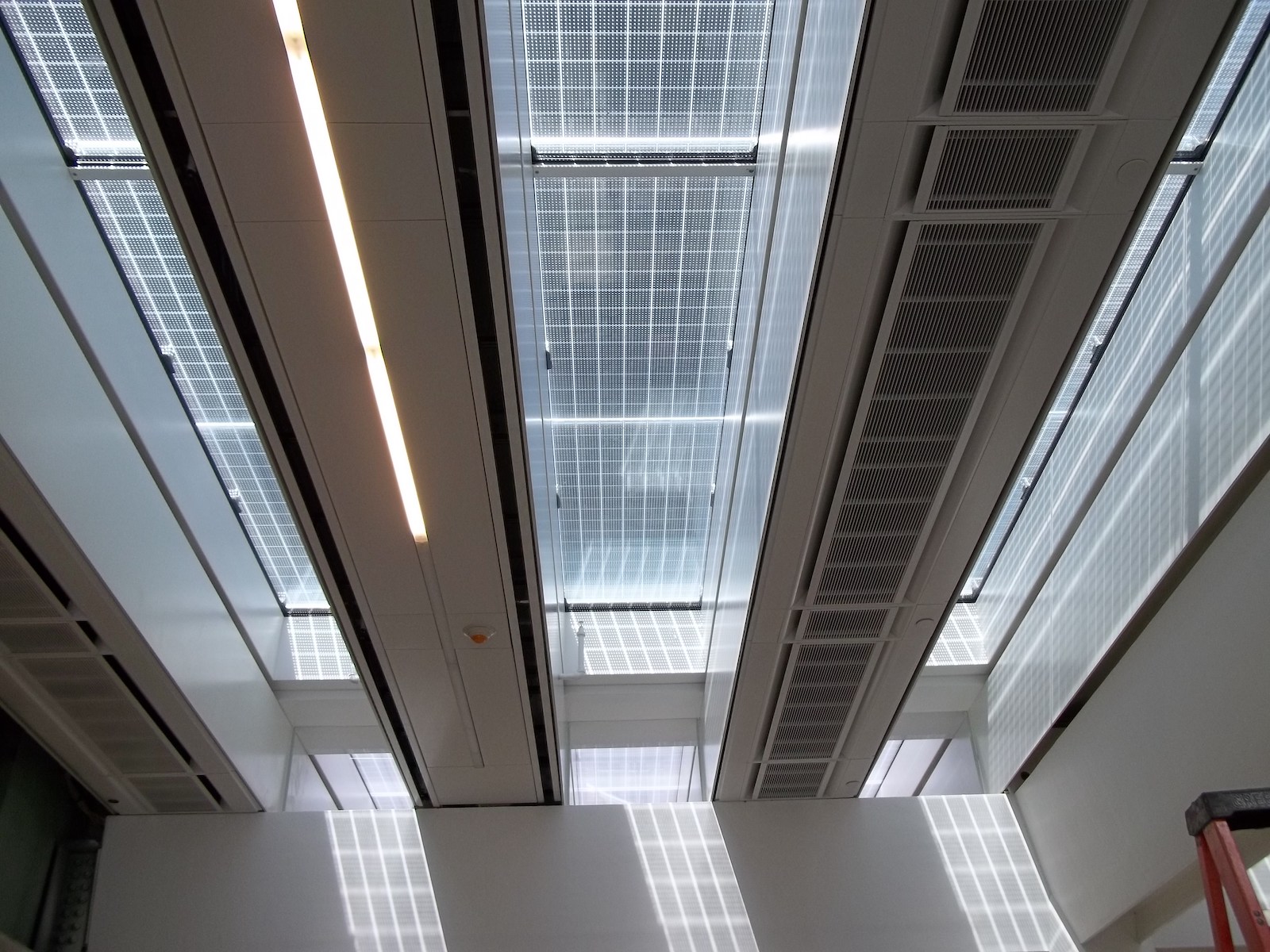
In many cases, however, skylights are seen as the ideal BIPV armature. The pharmaceutical giant Novartis opened its headquarters building a few years ago with the largest BIPV skylight in the world. “The photovoltaic skylight covers 27,500 square feet and consists of hundreds of large transparent photovoltaic glass units developed by Onyx Solar,” according to Power Engineering International, which worked with architect Rafael Viñoly Architects to complete the project. These horizontal and low-slope applications, including roof windows and solar cell covers for simple pedestrian shelters, perform optimally only when maintained well, says Grimshaw’s Rhoads: “Cleanliness is an important consideration. If your cells get covered in dust, the panels lose efficiency exponentially. So maintenance is key to keep them clean,” he explains, noting that the Dubai Expo panels are cleaned almost daily. Ivanoff adds that robotic cleaning systems used in desert solar arrays and on some new towers—along with dedicated maintenance crews—are important players in the drive to optimize efficiencies and yield of PV cells on BIPV systems over the life of the buildings.
In spite of the obstacles, Rhoads expects BIPV applications to expand as the technology becomes more ubiquitous and easy to specify. “These systems create a nice transparent condition,” he says, “and they are as integrated as possible since they power their buildings, bringing us closer to net-zero operations.”
Related Stories
| Feb 29, 2012
Report says BIPV glass market to reach $6.4 billion by 2016
The report analyzes the opportunities for BIPV glass products using c-Si, thin-film and OPV/DSC materials and provides eight-year forecasts in terms of MW and square footage shipped as well as forecasts of revenue generated.
| Feb 28, 2012
Salem State University Library & Learning Commons topped off
When it opens to students in the fall of 2013, the $60 million facility will offer new archival space; circulation and reference areas; collections; reading spaces; study rooms; instruction labs and a Dean’s suite.
| Feb 27, 2012
Consigli complete first building for Bigelow Ocean Sciences Campus
Designed by WBRC Architects Engineers in association with Perkins + Will.
| Feb 26, 2012
Milwaukee U-Haul facility receives LEED-CI Silver
The new elements of the facility now include: efficient lighting with day-lighting controls and occupancy sensors, a high-efficiency HVAC system used in conjunction with a newly constructed thermal envelope to help reduce energy consumption, and the installation of low-flow fixtures to reduce water consumption.
| Feb 22, 2012
Suffolk awarded Boston post office renovation project
Renovation of art deco landmark will add 21,000 square feet of retail and 110 new parking spaces.
| Feb 21, 2012
PV America West conference showcases solar growth market
Solar industry gathers March 19-21, 2012 in San Jose to discuss technology, market development and policy.
| Feb 20, 2012
All Steel names Breagy director of metro New York
Breagy is responsible for overseeing this region’s sales team while strategically coordinating the sales efforts of Allsteel dealers and representatives in the tri-state area.
| Feb 16, 2012
Summit Design + Build begins build-out for Emmi Solutions in Chicago
The new headquarters will total 20,455 sq. ft. and feature a loft-style space with exposed masonry and mechanical systems, 15 foot clear ceilings, two large rooftop skylights and private offices with full glass partition walls.
| Feb 13, 2012
Center for Sustainable Building Research launches CommercialWindows.org
Resource aims at reducing commercial operating costs and energy consumption.
| Feb 8, 2012
World’s tallest solar PV-installation
The solar array is at the elevation of 737 feet, making the building the tallest in the world with a solar PV-installation on its roof.


